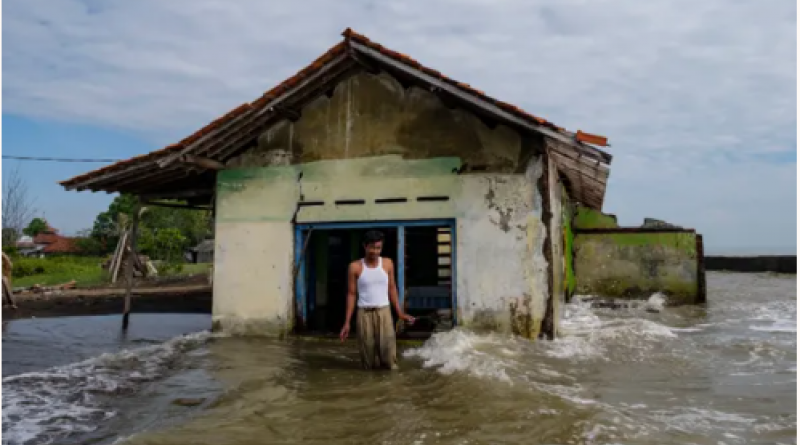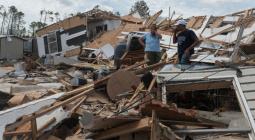The media is still mostly failing to convey the urgency of the climate crisis.

We asked the world’s press to commit to treating climate change as the emergency that scientists say it is. Their response was dispiriting.
The TV newsman Bill Moyers likes to tell the story of how Edward R Murrow, the pre-eminent US broadcast journalist of his time, insisted on covering what became Germany’s invasion of Poland in 1939. Murrow’s bosses at CBS News had other priorities; they ordered Murrow’s reporters to cover dance competitions in Hamburg, Paris and London, explaining that Americans needed some happy news. Murrow wouldn’t do it. “It’ll probably get us fired,” he told his colleagues, but he sent his correspondents to the German-Polish border; they arrived just in time to witness Hitler’s tanks and troops roar into Poland. Suddenly, Europe was at war. And Americans heard about it because journalists at one of the nation’s most influential news outlets defied convention and did their jobs.
Today, all of humanity is under attack, this time from an overheated planet – and too many newsrooms still are more inclined to cover today’s equivalent of dance competitions. The record heatwaves and storms of 2020 confirmed what scientists have long predicted: climate change is under way and threatens unparalleled catastrophe. And because carbon dioxide traps heat in the atmosphere for centuries, temperature rise and its effects are only getting started. As one scientist said as wildfires turned San Francisco’s skies orange last September, “We’re going to look back in 10 years, certainly 20 … and say, ‘Wow, 2020 was a crazy year, but I miss it.’”
A handful of major newspapers are paying attention. But most news coverage, especially on television, continues to underplay the climate story, regarding it as too complicated, disheartening or controversial. Last month, we asked the world’s press to commit to treating climate change as the emergency that scientists say it is; their response was dispiriting.
We created Covering Climate Now in April 2019 to help break the media’s climate silence; Bill Moyers talked about Murrow at our inaugural conference. Since then, Covering Climate Now has grown into a consortium of hundreds of news outlets reaching a combined audience of roughly 2 billion people, and the climate coverage of the media as a whole has noticeably improved.
But that coverage is still not going nearly far enough. To convey to audiences that civilization is literally under attack, news outlets should play the climate story much bigger, running more stories – especially about how climate change is increasingly affecting weather, economics, politics and other spheres of life – and running those stories at the top, not the bottom, of a homepage or broadcast. News reports should also speak much more plainly, presenting climate change as an imminent, deadly threat.
This message is muted at best today, and the result is predictable. In the United States, only 26% of the public is “alarmed” about climate change, according to polls analyzed by the Yale Project on Climate Change Communications (a member of the CCNow consortium). One reason? Less than a quarter of the public hear about climate change in the media at least once a month.
Good journalism leads the conversation, and there is certainly plenty of climate news worth covering these days. In a pair of stunning developments last week, a court in the Netherlands ordered the Royal Dutch Shell oil company to reduce its own and its customers’ greenhouse gas emissions by 45% by 2030 in accordance with the Paris agreement, even as shareholders of ExxonMobil and Chevron rebelled against management’s refusal to take strong climate action. A week earlier, the International Energy Agency declared that all new fossil fuel development must stop to prevent irreversible climate destruction. The climate emergency is upending politics, economics and virtually every other subject journalists cover, and newsrooms need to catch up.
They can start with the Climate Emergency Statement that CCNow issued in April as part of our Earth Day coverage. Co-signed by eight of our partners – Columbia Journalism Review, the Nation, the Guardian, Scientific American, Noticias Telemundo, La Repubblica, the Asahi Shimbun, and Al Jazeera English – the statement’s first sentence said: “it is time for journalism to recognize that the climate emergency is here.” Emphasizing that this was “a statement of science, not politics”, the statement linked to articles in peer-reviewed journals where thousands of scientists affirmed that fact. The statement noted that the Covid-19 pandemic illustrated how well news outlets can cover emergencies when they commit to it, and it invited journalists everywhere to apply that same urgency to the climate story.
More than 30 newsrooms have now signed the statement, but some major outlets told us privately they won’t sign. The phrase “climate emergency” sounded like activism, they said; endorsing it might make them look biased. Instead, they added, they would let their climate coverage speak for itself.
But that’s the problem: their coverage does speak for itself, and it is simply not reflecting the facts of the story. It is a fact that thousands of the world’s scientists, including many of the most eminent climate experts, say humanity faces a climate emergency. Most major news outlets still present climate change as no more important than a dozen other public issues, when the fact is that if the world doesn’t get it under control, fast, climate change will overwhelm every other issue. Another fact: the climate emergency comes with a time limit – wait too long to halt temperature rise and it becomes too late; CO2’s long atmospheric life makes further temperature rise inevitable, perhaps irreversible.
We’re not obsessed with whether a news outlet does or doesn’t use the term “climate emergency”; what matters is whether the outlet’s overall coverage treats climate change like an emergency. For example, does the outlet give the climate story the same 24/7 coverage it has devoted to the Covid-19 pandemic or, before that, the 9/11 terrorist attacks, or other landmark events? Has it reoriented its newsroom and reassigned reporters to cover the climate story? Do its journalists present the story with a sense of urgency?
At a summit in Glasgow this November, world leaders are supposed to adopt much stronger measures against the climate emergency. Between now and then, journalists have a responsibility to make sure the public understands what’s at stake and, crucially, that humanity already has the technologies and solutions to decarbonize our economies; what’s needed is the political will to implement them. Journalists also have a responsibility to hold powerful interests accountable for doing what’s needed to preserve a livable planet. That starts with telling the truth: about the climate emergency, its solutions, and how little time remains before it’s too late.
-
Mark Hertsgaard, the environment correspondent of The Nation, and Kyle Pope, editor and publisher of Columbia Journalism Review, are the co-founders of Covering Climate Now
June 2021
The Guardian




